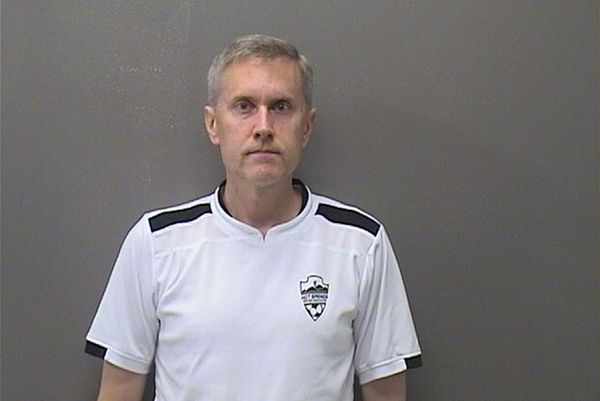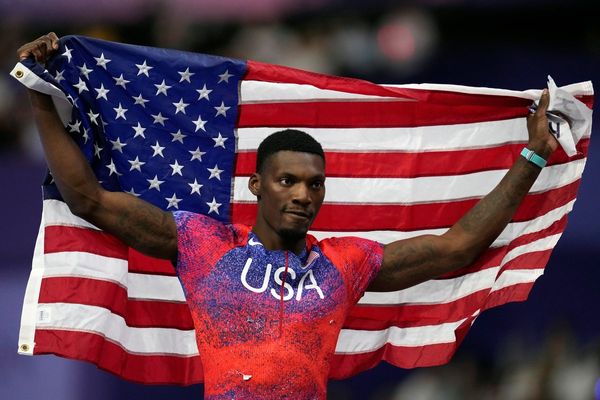
As Clark Gable once said when a scene wasn’t working: “I’ve got an idea. Let’s fill the whole screen with tits.” One of the most fundamental measures of the quality of a film or television programme is how far it manages to move from this elemental truth of entertainment. How well, you must ask yourself, has this thing succeeded in not simply filling the screen with breasts? From there you can move on to more rarefied considerations such as the acting, the script, the direction. But the tit question underlies all.
It becomes a trickier one to negotiate, of course, when your brief is to mark the 50th anniversary of the introduction into national life of Page 3 girls, as it was for Channel 4’s accurately titled documentary Page Three: The Naked Truth. I mean, then you’ve got to fill the whole screen with tits, haven’t you? Haven’t you? You haven’t, actually, because most people either know what “a Page 3 girl” means and if they don’t, a brief(s) description will suffice. (In much the same way, documentaries about porn don’t need to have blurry images of heads bobbing over laps or shafts disappearing into not-quite-identifiable orifices to light viewers’ way.)

But you can, easily, and Channel 4 duly has. We move through the decades of topless modelling in the Sun (first), the Daily Star (first boob wagon-jumper), the Daily Sport and the ever-swelling mass of competitors (to which lads’ mags were added in the 90s). And we revisit the 80s greats – Samantha Fox’s, Maria Whittaker’s, Debee Ashby’s – and the originals’ – Jilly Johnson’s, Nina Carter’s – and the later cohort’s – Jordan’s, Keeley Hazell’s, Emma Morgan’s, Hannah Claydon’s – and sometimes the women attached to them spoke.
Most of the former models had happy memories – the money, the glamour, the excitement, the escape from ordinary and sometimes impoverished lives. Very few had nothing but happy memories. There was the mighty Sam Fox recalling the time David Cassidy followed her into the loo after a shoot (at which he was “excited – I don’t really need to say more than that”) and … I don’t know. “Groped her” we would have said back then, children. “Sexually assaulted her” you might argue now.
There was Debee Ashby crying as she remembered driving away from it all at 19, able only now to understand that “16 was too young to go into the industry”. This after recounting how she felt odd even at the time appearing at her mother’s behest in a mother and daughter topless shoot “so that Dad could have the photo”. The first Emma Morgan knew of her new career was when she saw a topless photo in the Sport that her boyfriend had taken of her on holiday in Portugal and sent in without her knowledge or consent. And it ended when she was set up by a rival newspaper, which monstered her in a spread claiming, among other things, that she was a drug addict, which she strongly denies.
But such tales hinting at the darkness round the edges of the superstars’ spotlit world – Claydon was spotted at 15 and the Sunday Sport ran pictures of her bursting out of her school uniform as they counted down the days till she turned 16, and published her first nude shots on her birthday – were spread thinly through the hour. They were never allowed to pollute what was essentially a lighthearted, breezy look at the phenomenon of topless models appearing daily for half a century in family newspapers and homes all over the country.
The makers largely bought into the notion of it all as innocent fun, “a great British institution” and the rest of the spin put out by the media moguls who made out like bandits from it (the Sun’s circulation doubled in a year after Murdoch introduced the feature). The former Labour MP and minister Clare Short was given a few scattered minutes to recap the reasons she proposed in 1986 that such photos be outlawed for the discomfort they and the men looking at them caused women. Are you old enough to remember that particular crawling fear as a teenager in a railway carriage or on a bus next to a bloke looking at Page 3 and then at you with semi-glazed but appraising eyes?
Lucy-Anne Holmes was given even less time to explain the thinking behind the social media campaign that in 2012 eventually succeeded in putting an end to the tradition, by then a shadow – albeit a stubborn one – of its former self. Neither mentioned the vitriolic abuse they suffered as a result.
Short also made the single point, in the closing minutes, that gestured to the wider issues behind all the individual testimonies that went otherwise unexamined. “If we’re a society that can’t offer a dignified life to attractive young women without exposing their bodies it really says something miserable about the opportunities it provides.”







